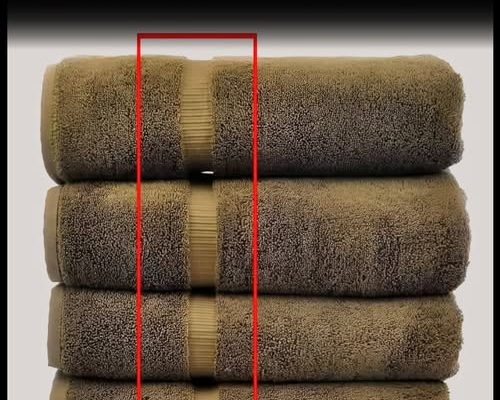But those lines actually have a purpose. In fact, they’re part of a carefully engineered design that affects how your towel performs, how long it lasts, and even how it feels against your skin.
A Matter of Weaving, Not Just Decoration
The lines you see are usually created through a technique called a dobby weave. This method uses a special loom attachment that can raise and lower different warp threads to create small, repeating patterns in the fabric. While the patterns can be decorative, in towels they often serve a structural role.
The dobby weave forms denser “bands” in certain areas, which act like reinforcement points. These bands help the towel maintain its shape and prevent excessive stretching, especially after repeated washing and drying. They also reduce fraying at the edges, meaning your towel stays usable and attractive for longer.
Built for Strength and Longevity
Think of these lines as the framework of the towel. Without them, a large piece of woven cotton could gradually distort, losing its neat rectangular shape. The reinforced bands act like stabilizers, helping the towel keep its dimensions even after years of use.
This design choice also helps combat one of the main enemies of any towel—wear and tear from constant laundering. The reinforced lines can take on some of the stress, reducing strain on the rest of the fabric.
Better Absorption and Faster Drying
The benefits aren’t limited to durability. Those raised or textured lines increase the surface area of the towel ever so slightly. This helps in two ways:
-
Improved Moisture Absorption – The channels between the lines help draw water into the fibers more efficiently, giving you that soft, quick-dry feel when you wrap up after a bath or shower.
-
Faster Drying Time – The same channels also allow for better airflow when the towel is hung up, meaning it can dry faster and stay fresher between uses.
A Subtle Guide for Folding and Hanging
There’s also a practical side to the placement of these lines. In many towels, the bands are located closer to the ends, creating a visual cue for where the towel should be folded or hung. This can make your linen closet look neater and ensure the towel hangs evenly on a bar.
More Than Meets the Eye
So the next time you pick up a bath towel, run your fingers over those textured lines. They’re not just an aesthetic flourish—they’re the result of thoughtful textile engineering. From structural stability to improved performance, those simple lines are doing more for you than you probably realized. They keep your towel soft, strong, and functional… all while looking good in your bathroom.



